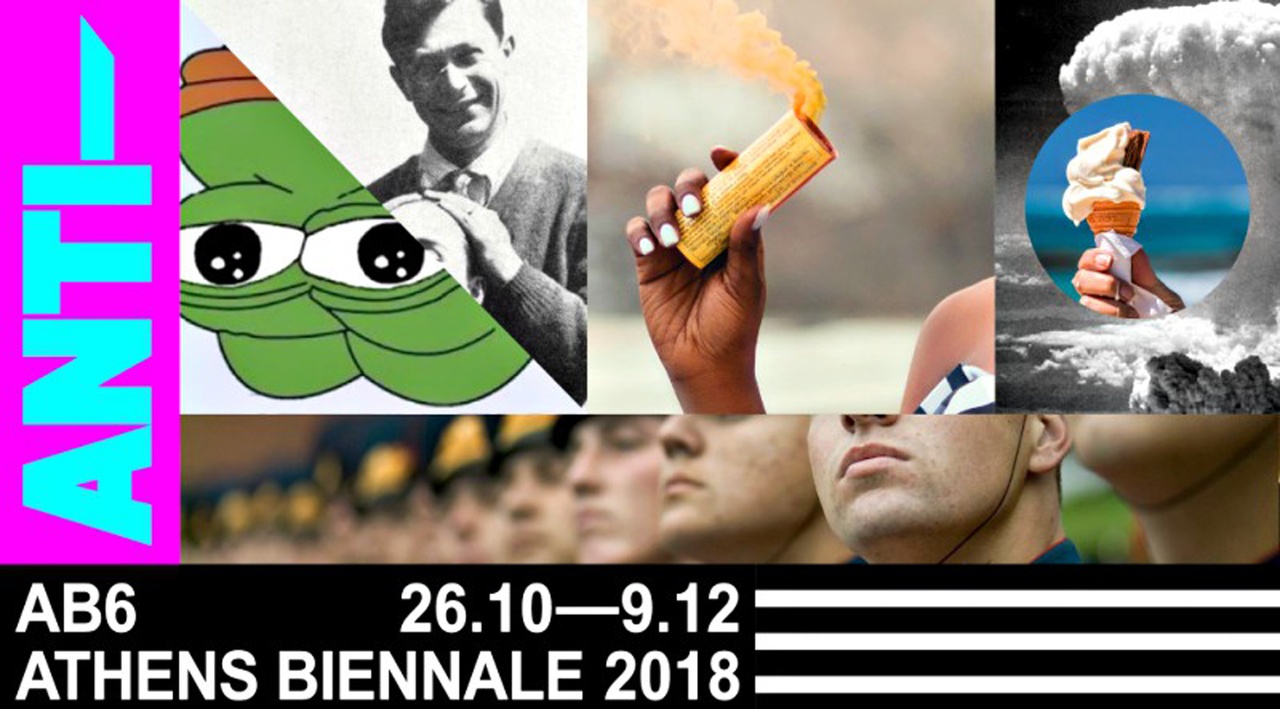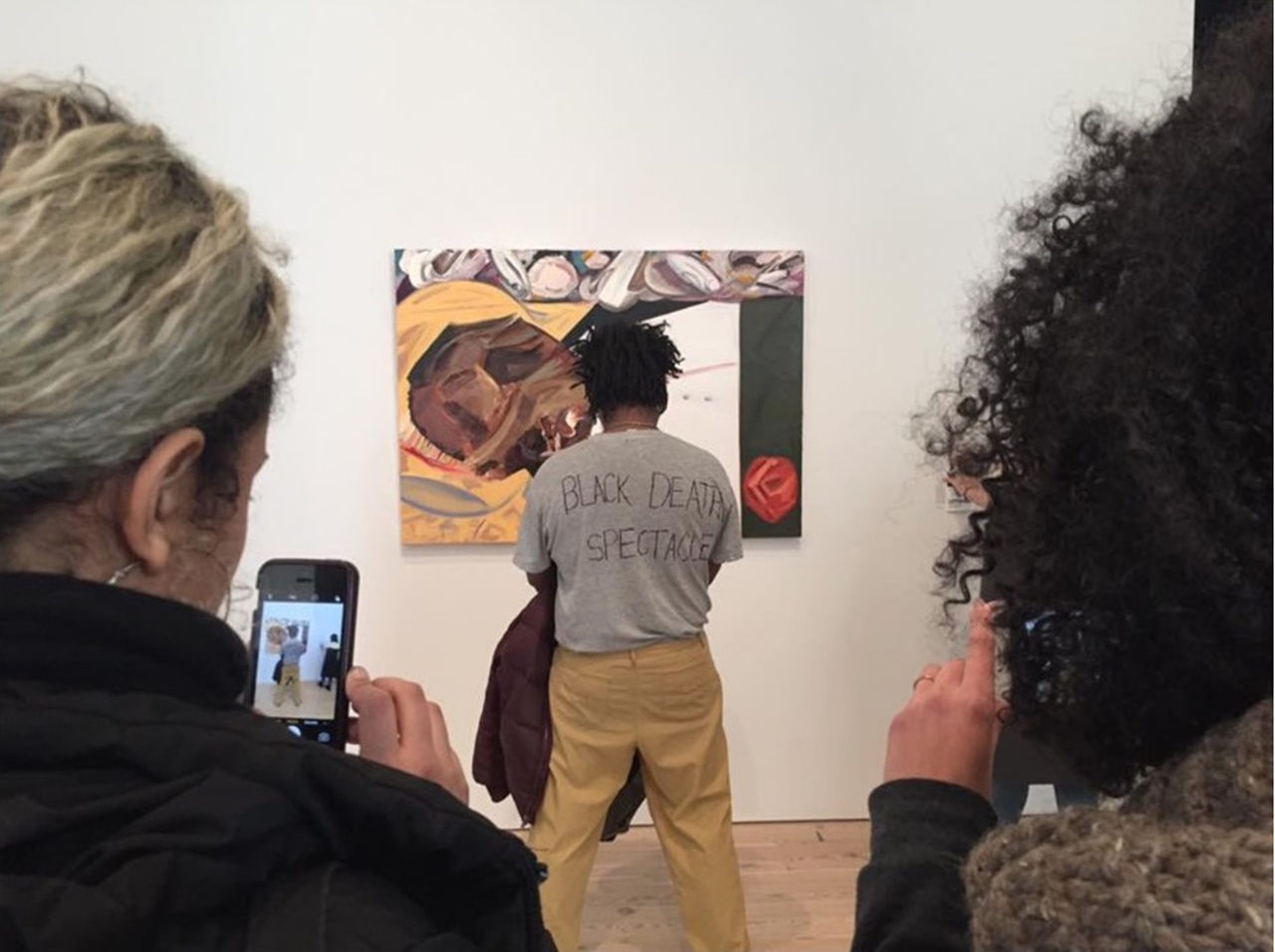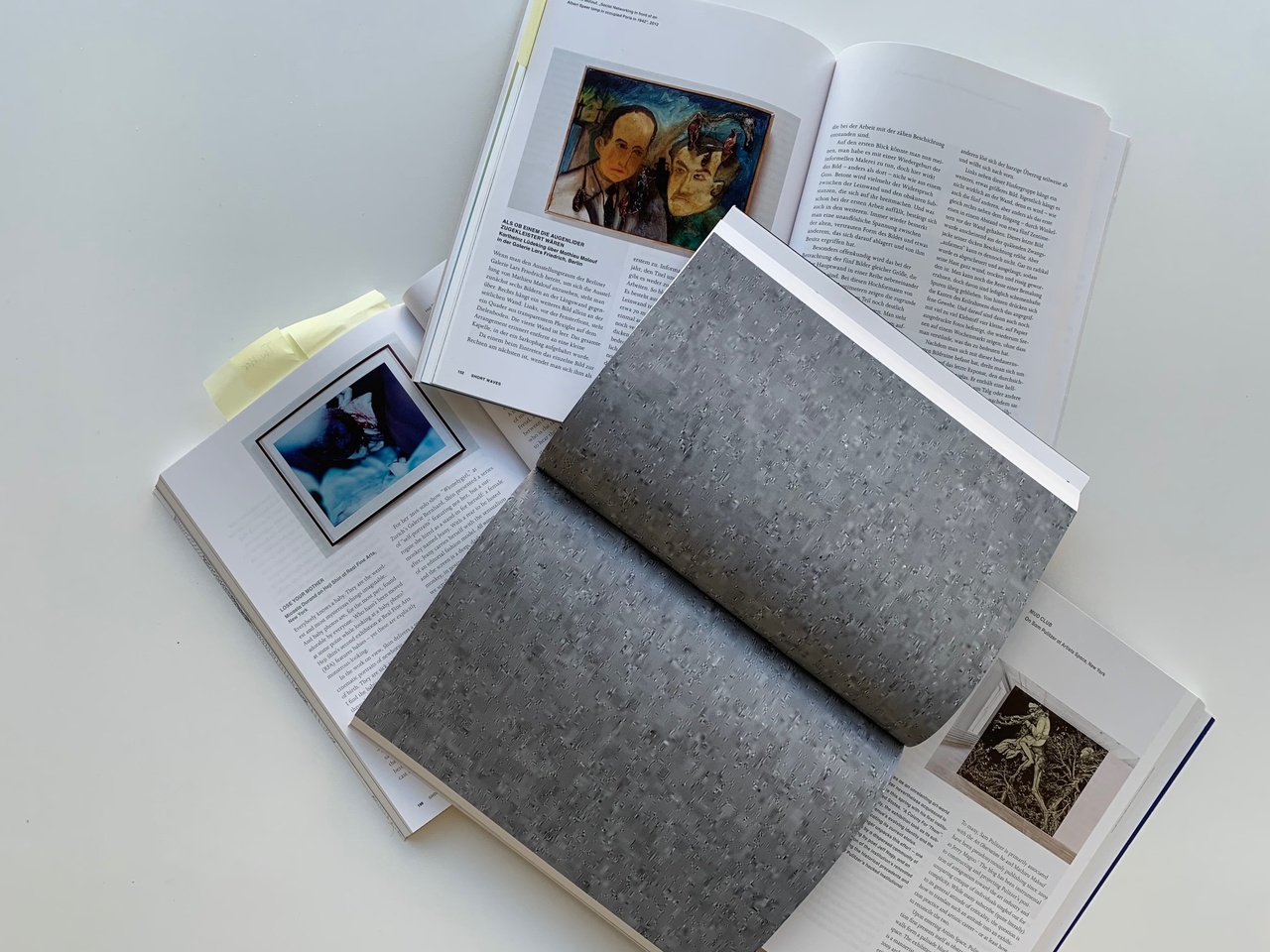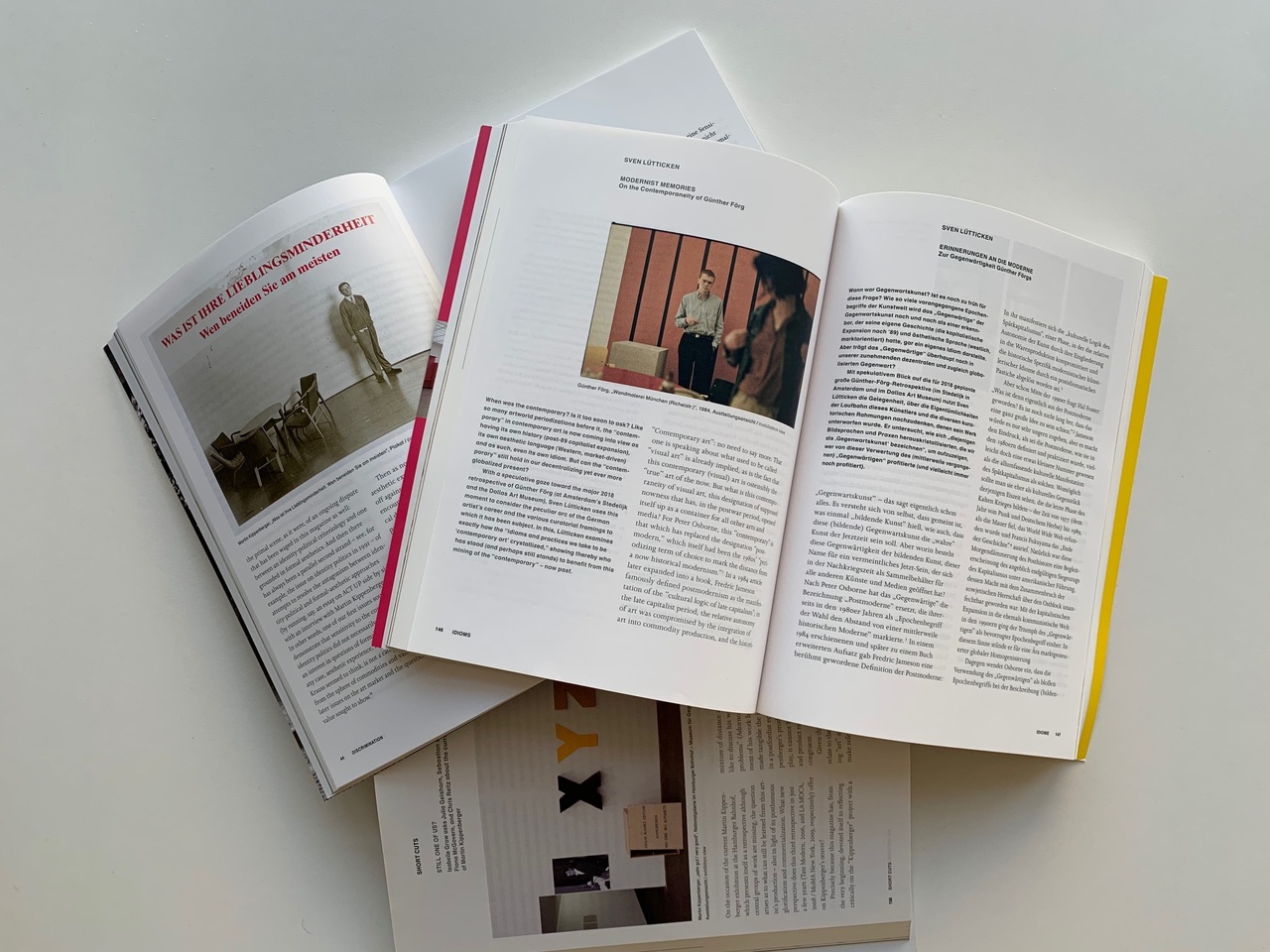There are so many examples in the art world today of artists who are fond of flirting with the language, symbols, and memes of the alt-right. For many of these practitioners, the flirtation is not one that should be taken seriously. When artworks and exhibitions do offend and confirm an artist’s position of privilege and power, the argument goes that it is merely an instance of playfulness that is protected under free speech. How convenient.
One popular version of this art is work that manifests itself as a kind of trolling, exploiting social media to create campaigns against certain figures in the art world who take these offenses to heart. Of course, there is a tradition of such moves – transgression justified as free speech – and in order to put recent trends into some kind of historical perspective, Ana Teixeira Pinto and Kerstin Stakemeier provide a much-needed pathology of certain artists and artworks that fall into this category.
Liberalism was always (mis)construed as a horizon of open potential by the subjects it manufactured. As a direct consequence of these failed promises, it also produced and reproduced its own inner differentials, and along with it, a great many illiberalized lives, dispossessed and decapitalized within the very horizon of possessive individuation liberalism necessitated. The mediation of this gap between aspirational subjecthood and material subjection has been the primary task of education, culture, and art. Contemporary art has recently reemerged as the battleground on which these epistemic struggles are fought, the site where this gap can be made visible, and where its material foundations and illegibilities are articulated. What we retain from the Whitney Biennial 2017 was the challenge posed to Dana Schutz’s painterly appropriation of the Jet magazine photograph of Emmet Till’s corpse, disfigured by an atrocious lynching. What we retain from the Whitney Biennial 2019 is the (successful) struggle to remove weapons manufacturer Warren Kanders from the board of the museum. In the US, these struggles over the politics of representation – with the involvement of groups like W.A.G.E. or Decolonize this Place – have unfolded in a widely mediatized manner, while parallel attempts to organize artists and other art workers, though no less crucial, remain restricted to a less publicized horizon. Anti-fascist organizing in the UK, meanwhile, succeeded to “Shut Down LD50 Gallery,” and to use this effort as an expanded platform for popularizing a radical critique of the politics of contemporary art, while unionizing beyond the art milieu (e.g., relating to the housing question). In Germany, on the other hand, artist-led campaigns targeting representational questions still appear isolated and fundamentally disconnected from both anti-fascist and unionized organizing, while anti-colonial and anti-fascist challenges to the contemporary art canon happen either on social media or in institutional settings, such as at Haus der Kulturen der Welt, Savvy Contemporary, or District Berlin – and are hence bound to figure as cultural rather than political. This might be the reason why the recent resistance against the repoliticization of contemporary art has accrued the most institutional capital in Germany, where a great many positions have cohered around the rejection of any form of social accountability, in effect articulating a categorical rejection of any scrutiny over one’s own implications in the perpetual oscillation between subjectivization and subjection under the cloak of “artistic freedom” or “freedom of speech.” This is, in our view, the expression of a wounded narcissism, unable to divest from the pleasurable investment in the (increasingly besieged) notion of its own universality. Nursing its injury, it sets out to injure. What follows is a brief glossary of the figures of social sadism nestled inside the “freedom of speech” this narcissistic wound lionizes.
1. Social sadism
Ongoing boundary disputes, and attendant panic, have led a great many artists and institutions to rally in defense of “artistic freedom” or “free speech” – e.g., the 2018 Athens Biennale (“ANTI”), the exhibition featuring Boyd Rice at Greenspon Gallery in New York (planned but never realized), or Spike magazine’s summer issue on “Immorality” – allegedly threatened by moralistic dogma. Appeals to liberty in this narrow sense can (and often do) clash with freedom in a broader sense, contributing to political unfreedom. “Free speech,” as Keston Sutherland recently argued, is intimately tied to the freedom to, if need be, transgress norms, and in so doing potentially offend others – how else could freedom assert its autonomy? According to Sutherland, in a great many passionate defenses of “free speech,” the conjunction between these two elements – freedom on the one hand, and transgression on the other – “is presented as a parenthetical addition that however must imperatively be insisted on: we cannot say what free speech is without right away adding that giving offence is or may be essential to it.” Typically, this giving offense is portrayed as an unsought, yet unavoidable, side effect of “saying it like it is.” From this perspective, it is easy to see how, to paraphrase Sutherland, it might be, under certain circumstances, seen as one’s moral and historical duty to hurt other people in order for speech to free itself from the constraints of civility. The logic of this argument can be summed up as follows: if the measure of freedom is transgression, then transgression is ultimately measured by the amount of pain one is able to inflict.
Rather than discuss “free speech” (or lack thereof), we find it a greater imperative to investigate the conditions under which the pain of others becomes the measure of freedom, examining the ongoing attempts to render aesthetic experience a direct extension of sadistic cathexis, and in so doing probe the function this performs. We are thus interested in mapping the circumstances under which cruelty can mask as a principled stance, and recruit the rhetoric of (counter)morals – the defense of “freedom” – to buttress an otherwise immoral edifice.
The term we want to suggest for this, “social sadism,” is not simply a form of directed, invested cruelty. It involves a redoubling, at the symbolic level, of material depredation. Privilege always denotes the prerogative to define and control the frame of interaction. Sadistic taunts hinge on what Gregory Bateson called a more complex form of play: simply put, for a game to be a game, the participants have to agree on the protocols that frame their exchange. Art-world edgelords insist the chauvinistic epistemes in which they traffic must be read as irony, no matter how hurtful or distressing others might experience them to be. Defining their behavior as play when, in reality, their conduct says otherwise, their “game” is constructed not upon the premise that what they are engaging in is actually “play,” but rather around the question of whether it is indeed “play”: a type of interaction that finds its ritual forms in hazing or initiation practices.
2. Narcissistic transgression
The wounded narcissism that often puffs its chest in “defense” of “art” rests on the belief that we have a right to our present, to all of it – an impulse that connects the otherwise disparate grabby sentimentalism of Dana Schutz’s Open Casket (2016) with the malignant puerility of Mathieu Malouf’s Tankie Meme (2019). While the vocabulary is political, its rhetoric is often personal: the self-image is that of a freedom fighter, but the social effect is ultimately sadistic. Its enjoyment of disinhibitions is in fact predicated on inhibiting others. In their issue on “Immorality,” Spike magazine’s New York editor Dean Kissick argues that we need “more immoral art; […] difficult work made by artists who are willing to challenge or simply disregard conventional morality in some way.” What Kissick calls morally complex work is just art that reproduces systemic degradation, albeit individuated and aestheticized. He goes on to defend Christoph Büchel’s right to use the pain of others as his platform with recourse to Georges Bataille and the Acéphale group – a militant anti-fascist conspiracy forged in 1936 – as well as to Pier Paolo Pasolini, the radical communist filmmaker. These historical transgressive practices were directed very pointedly against the brutalizing cultures of modern domination and their colonial core. As Michel Foucault elaborated in his text dedicated to Bataille, to transgress means “to find itself in what it excludes (perhaps, to be more exact, to recognize itself for the first time), to experience its positive truth in its downward fall.” Here, transgression is ultimately a self-transgression, measured not by its effect on others but by the limit encountered in the process of self-abolition. The type of transgression that the champions of “freedom” lionize, on the other hand, is directed not toward self-abolition but outward, toward designated targets. While Pasolini’s and Bataille’s expenditure of one’s own identity renounces the self, Kissick in turn renounces the social and the historical. Kissick’s fear of “being cancelled” is just his refusal to, and anxiety about, allowing himself to examine both his and art’s positionality within the wider imperial context in which it is instituted and through which it continues to expand itself. His call to “simply disregard conventional morality in some way” is really just an attempt to secure a comforting amnesia, thereby ridding himself of accountability, creating an endless horizon of narcissistic transgressions in which “the best way to say something is to construct a distasteful spectacle.”
Not that contemporary art has ever been short on these types of male performance. A great many careers – from that of Santiago Sierra to Artur Żmijewski – were built on confounding the “luxury of cynicism with the rhetoric of honesty.” In his 1989 article “The Artist as Exemplary Alcoholic,” the art critic Wolfgang Max Faust, writing about a timely champion of “distasteful spectacle,” Martin Kippenberger, detailed how “behind Kippenberger’s agitated anarchistic surface a reactionary becomes visible who reproduces the same prejudices again and again. Cynicism borders on a boredom that progresses in brachiating from gag to gag, from one dirty joke to the next.” Such aesthetic politics of cynicism also became characteristic of a subsequent generation of (male) artists who discovered their cool in the abjection of others. The inheritors of this form of sadistic transgression led an exemplary life in the art-world blog Jerry Magoo, where artists Sam Pulitzer and Mathieu Malouf published their “Art Observations” semi-anonymously. Malouf’s identically framed Instagram and Twitter profiles added extra visibility to their slurs, which were also reproduced in art, if not as art, in a work by Michael Krebber, Kippenberger’s former assistant, who in his C-A-N-V-A-S, Uhutrust, Jerry Magoo, and guardian.co.uk Paintings (2011) rendered screenshots of Jerry Magoo onto canvas, in which he himself appeared as a reference.
The thing that the 60+ generation of this lineage of transgression has in common with their 30+ second life is what Kippenberger formerly admired as Günter Förg’s “insult program,” the systematic bullying Kippenberger triumphantly detailed in an interview, basking in anti-Semitism, homophobia, and misogyny. Faust writes that both men’s “tendency to reproduce authoritarian prejudices” is simply a performance of the “authoritarian character structure” Adorno and Horkheimer outlined, but that its cultivation within the arts is new. Well, it is new no more. The difference today is that instead of being “distortedly facilitated and masochistically excused by alcohol,” today’s bullies are totally sober. And while they are equally proud of their own “insult program” – case in point, Malouf’s show at Jenny’s in Los Angeles was titled “#LUKETURNERISRETARDED” and featured the aforementioned “Tankie meme,” a sculpture repeating the Jewish-Bolshevist trope popularized by the Nazis whose single conceptual gesture seems to be an attempt to assimilate Andy Warhol to Arno Breker. Whereas Kippenberger and Förg presented their transgressions not as their art but as private digressions, their contemporary carbon copies arguably do not have any body of work that exceeds these narcissistic transgressions. It might not least be the misconception flaring up in Krebber’s artblog series, namely that the continuation of “insult programs” from Förg and Kippenberger to Pulitzer and Malouf is treated as an “artistic lineage,” that needs to be countered.
3. Ironic nihilism
Ironic nihilism is the existential philosophy of the alt-right. This is such a widely acknowledged fact that it is quoted in the Urban Dictionary. But ironic nihilism is also pop culture’s default mindset, and has been for a few decades now. Like any other cultural mode of representation, irony is context-specific. Contemporary irony must be understood as part and parcel of a wider historical trajectory, in which capitalism as world ecology shifted from a weak utopia to strong dystopias. As David Foster Wallace argued, the attachment to irony reflects a shift from the conceptualization of art as a creative instantiation of real values to the conceptualization of art as a creative deviance from bogus values. But this self-congratulatory celebration of one’s capacity to see through deception and hypocrisy does not necessarily serve an exclusively negative function. Anyone asking an ironist what s/he really means, as Foster Wallace put it, will “end up looking like a hysteric or a prig.” It is irony’s ability to derail ethical questions that facilitates its reversal of social functioning, shifting from authority-challenging to authority-affirming by evacuating the political. Irony affirms the ideology it claims to devalue or disregard via a negation of any potential or putative alternatives. This is what Jerry Magoo thrived on, but also what today masks as Institutional Critique – albeit a brutalizing and self-serving one. This form of dilute-and-malign irony also serves an individuating function, which precludes collective formation by minimizing the object of (collective) investment while maximizing the subject’s (individual) self-contentment and sense of superiority. Under the current condition of dewesternization, as pressures on privilege mount, ironic nihilism has found a renewed and ferocious intensity. Friedrich Nietzsche understood nihilism – irony’s sparring partner – as a question of valuation, a backhanded compliment to conviction. The function of this discursive apparatus (ironic nihilism) is to recover the totalizing dimension of white eschatology (now simply negativized), and to devalue calls to redress injustice, ultimately reaffirming the color line.
4. Overidentification, affirmation, pastiche, mimicry
The rapid rise of the movement that became known as the alt-right was fueled by its aesthetics rather than by its politics. Despite ongoing attempts to forge alliances with the traditional Far Right, the alt-right remains intensely suprastructural. The contemporary art milieu proved particularly susceptible to this far-right creep because several of its conventions of plasticity and meaning-production devices – like irony, transgression, over-identification, affirmation, and pastiche – have, by virtue of their ambivalent nature, an undeniable use value for the alt-right. Contemporary art hasn’t been able to think through the contradictions between what it purports to do and what it inadvertently does, because the above-mentioned means and modes of ideation are particularly ill-suited for this task.
5. Autonomy
The category “art” in western modernity designates the alienation of artistic labor from other forms of labor, rendering it systemically asocial within the horizon of an ever-expanding imperial frontier. Artistic autonomy is an ideological category that blends together an element of truth (the praxis of art is not totally assimilated to social praxis) with an element of untruth (the hypostatization of this fact, the result of a historical process, is misrecognized as the “essence” of art). To quote Nicole Demby: “In this conception, the formal progression of Western art is both teleological and divorced from history, the product of Oedipal overcoming or individual psychological reaction or the whim of genius.” It is this notion of art, lionized as an unassailable realm of cultural expression that can, by virtue of its manufactured ahistoricity, function as a container for an (il)liberal concept of absolute freedom.
The positing of such an absolute freedom in and of artistic expression, however, delivers what is taken up as its object to an inescapable historicity. Borrowing Isabelle Stengers’s distinction between thinking in major keys – which presupposes “a convergence between (its) freedom and truth” – from that in minor keys, that is, acting beyond an authoritative frame of legitimization in series of mutable “testexperiences,” what we witness in much contemporary art is the perpetual conflation of the one with the other. In Heji Shin’s Kanye (2019), a series of larger-than-life photo prints, the artist isolates her subject, a recent pop icon of political reaction, within an aestheticism that renders West as an incapacitated melancholic. In most of the heavily colorized prints, West poses frowning as if in inexplicable doubt – oversized portrait-style close-ups of a vacated musician turned cultural signifier. Interviewed about these works, Shin maintained: “I don’t admire good manners or the ‘right’ political views in art.” And while this is meant to justify her choice of West as subject, it ultimately speaks more to her aesthetic treatment of him as an object. Shin’s (aesthetic) freedom is predicated on isolating West’s own from any possible aesthetic “testexperience.” This is an updated Institutional Critique that installs itself in major keys: West is framed as the object of Shin’s truth, as a historical sacrifice made to her freedom.
6. The (un)representable
As social pressures on these modern formations mount, we encounter, more and more, privileged subjects on a rampage, running amok through the public sphere; sensing their self-representations no longer acquire the legitimacy and authority they once had simply by virtue of approximating liberal ideals (read: a nationally sanctioned cis-gendered able body), they turn to attacking whatever deviations from their norm emerge in their field of vision. In his contribution to Spike magazine’s “Cancel Culture” panel discussion, Malouf said he can’t quite grasp how freedom would reproduce oppression because “freedom is a neutral thing that everybody who has enjoys.” Unconcerned, or ignorant, about what must remain unseen so that this “freedom” retains its hegemony, the artist seems unable to grasp how “freedom” is the foundational fantasy of a form of subject formation that laid waste to whole societies in order to impose his liberties.
The acculturated epistemes of modern life’s continued mutations (to not call that progress) operate under the requirement to perpetually distinguish themselves from the racial ontology that is forcefully attached to those who fall prey to liberalism’s dispossessing subjections. According to David Lloyd, “every approach to the subaltern seems to be haunted with the specter of violence.” The disempowered and marginalized, according to Lloyd, appear by virtue of their exteriority to representational categories not simply as violent, or in violence, but as violence – the “lost object of representation” – an illiberalized individuality. It is through a politics of representation that the domain of liberal life is safeguarded and legitimated as resisting this violence: the infinite potential assigned to its own humanity thus carries on despite the finitudes it systemically – and, as in the above-mentioned cases, individually – inflicts. Aimée Césaire and Frantz Fanon had already registered this fact as the dynamism of dehumanization at the core of the colonizer’s subjectivity, genocides, pauperizations, and perpetual depletions of modernization. The blatant depotentiation, the mortal banality assigned, to quote Lloyd again, to the “disjunctive” lives lost vis-à-vis “a subject that is representative,” stabilize a highly selective humanism, one differentiated by the ability to individually represent “subjecthood per se.” The insistence on inherited privilege as a means of understanding one’s own position as this “subjecthood per se” undergirds the above-mentioned examples; subjects whose rationality, according to Robert Hullot-Kentor, “ascertains truth only in the achievement of the separation of knowledge from its object,” therefore declaring themselves no longer responsible for the violence they inflict. This (self-)dehumanizing core of modern humanism created a subject whose isolation is at once a function of his privilege and unsettled by it, whose bloated yet jittery self-representation bristles with something like a paranoia of possession, haunted by the fear of being rendered indistinguishable from its objects. These bloated subjectivities can still count on public forms of representation in political and cultural discourse to be deployed in their favor, as in the case, for instance, of the 2018 “ANTI” Athens Biennale, dedicated as it was to a wholly undialectical play between law-making and law-breaking, unmoored from politics or history, aesthetically rendering those transgressed and those transgressing indistinguishable.
7. “It is not racist because I don’t mean it to be!”
Variations of this type of statement are currently repeated with mind-crushing consistency. They point to a socially alienated psychology, unburdened by centuries of oppression, for whom content is private property, and attempts to commonize meaning are viewed as a form of trespassing, a violence against the sanctity of individual expression. To those for whom everything could be had, the idea that something, anything, is off-limits, that it cannot be treated as raw material or resource to be extracted, feels like a form of oppression. Hardly any of the responses to Hannah Black’s open letter against the exhibiting of Open Casket discussed it as a political intervention. Instead, there was an almost unanimous repudiation of Black’s call for contextualization, for understanding the subjects of art as materializations of situated consciousness. Here, at the moment of its historical occlusion, the notion of artistic autonomy aligned itself with settler colonial psychology, to violently lash out at those whom it formerly robbed of property and dignity, for articulating the desire that their boundaries be respected.
8. Ironically,
weaponizing one’s identity to place oneself in an unassailable position has been a strategy of choice by those who decry “identity politics.”
9. Paranoid ideation
Calls for aesthetic and social accountability, when directed at such work, have been doggedly decried either as “moralistic” (read: social conscience) or as a “personal witch hunt” (read: personal accountability). The retorts are, as follows, most often gestures of self-victimization, seemingly unable to grapple with the fact they come to be questioned for: alluding to the “major keys” while imagining themselves as “minor.” Another contributor to the aforementioned “Cancel Culture” panel, the writer Nina Power – who had been an organizer on the left for many years – has now herself subscribed to such strategies. Transposing criticisms of the renaturalized conception of femininity she has come to champion as attacks on her as a “woman,” Power has attempted to render herself immune to any request for social or political situatedness. Hullot-Kentor has recently located such aggressive emptying of one’s accountable subjectivity in the figure of Donald Trump: “There is no thinking, only the promulgated self-evidence of its own primacy and a feigned humility momentarily postponing attack. The speaker is selfless […] in florid self-reference he is unable to recognize himself.” We encounter the vengeful actions of a subject “face to face in the hall of mirrors he solely occupies […] this ‘loser’ populating a virtual world dedicated finally to getting even.” Rather than argue their position, what we witness in these cases is a performance of paranoid subjectivity. In Jon Rafman’s brutally misogynistic Dream Journal (2016–17), which has been exhibited in galleries, biennials, art fairs, and institutions around Europe, we encounter a digital world populated by the resentful geek. Acting as if the world itself was stolen from him, he obsesses about “getting even” with pornographized feminine figures that appear to be directed against him, hence negatively existing, but for him. Here, too, it is as if a lack (of empathy) is registered as an excess (of persecution), unable to connect to the present in any meaningful way other than through a charade of self-deflections and psychopolitics. Either way, this frenzied performativity fails to yield any meaningful movement – aesthetic or otherwise – that could signal a departure from the aspirational psychology that undergirds the neoliberal matrix.
Notes
title image: William Henry Margetson, "Henry Irving als Mephistopheles und George Alexander als Faust in ,Faust`von W.G. Wells, nach Goethe", 1885 / "Henry Irving as Mephistopheles and George Alexander as Faust in ,Faust`by W.G. Wells, adapted from," Goethe, 1885





